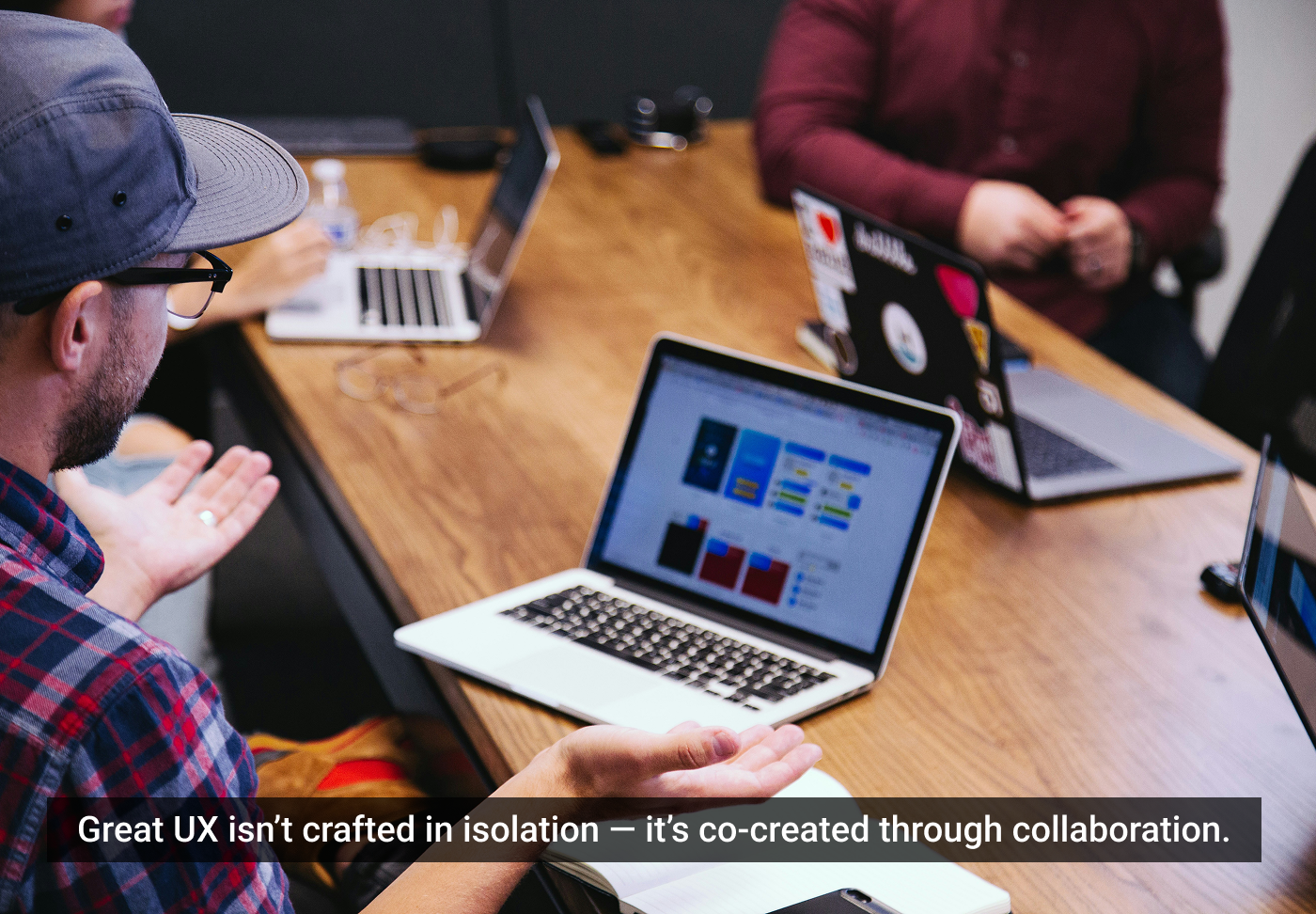Too often, UX design gets confined to a silo, separated from other crucial functions within an organization. This isolation can lead to subpar user experiences, missed opportunities, and ultimately, frustrated users. To truly elevate UX, designers need to break free from this silo and embrace collaboration with product managers, engineers, and stakeholders.
Why collaboration is key
UX design isn’t just about beautiful interfaces; it’s about understanding user needs and creating solutions that are both usable and desirable. This requires a deep understanding of the product’s purpose, technical feasibility, and business goals. Collaboration enables UX designers to:
- Gain diverse perspectives: product managers bring insights into market trends and user needs, engineers understand technical constraints and possibilities, and stakeholders provide valuable business context. By incorporating these diverse perspectives, UX designers can create more holistic and effective solutions.
- Ensure feasibility: early collaboration with engineers helps identify potential technical challenges and ensures that the proposed design is actually buildable. This avoids costly rework and delays down the line.
- Align with business goals: collaboration with stakeholders ensures that the UX design supports the overall business objectives and contributes to the product’s success.
- Foster a shared understanding: collaboration helps create a shared understanding of the user experience and its importance across the organization. This leads to greater buy-in and support for UX initiatives.
Examples of successful collaboration
- User research: UX designers can collaborate with product managers to conduct user research, analyze data, and identify key user needs. This shared understanding ensures that the design is truly user-centered.
- Prototyping and testing: collaboration with engineers during the prototyping phase allows for early feedback on technical feasibility and helps identify potential usability issues. This iterative process leads to more refined and user-friendly designs.
- Design reviews: regular design reviews with stakeholders provide an opportunity to gather feedback, address concerns, and ensure alignment with business goals. This collaborative approach ensures that the final design meets the needs of all stakeholders.
- Design systems: collaboratively building a design system with engineers ensures consistency and efficiency in the development process. This involves defining shared components, style guides, and coding conventions. Without this collaboration, inconsistencies and technical debt can quickly accumulate.
- Accessibility: working closely with engineers to implement accessibility features ensures that the product is usable by everyone, including people with disabilities. Ignoring accessibility can lead to exclusion and legal challenges.
- Performance optimization: collaboration with engineers to optimize page load times and overall performance is crucial for a positive user experience. Without this collaboration, a visually appealing design might be slow and frustrating to use.
To create truly user-centric digital experiences, UX designers need to work closely aligned with other disciplines such as product management and engineering. This means collaborating on user research, analyzing data together, and jointly creating user personas. This shared understanding ensures everyone is on the same page when it comes to user needs and priorities. It also means involving UX designers in product roadmap discussions so that user experience considerations are baked into feature planning and release cycles.
Furthermore, design decisions should be driven by data, not just intuition. UX designers and product managers should work together to define key performance indicators (KPIs) and track user behavior. This data can then be used to inform design decisions and validate whether the product is meeting user needs and achieving business goals. This collaborative approach ensures that the user experience is not only delightful but also effective in driving desired outcomes.
Collaboration gone wrong
Imagine a scenario where UX designers work in isolation, creating a beautiful and user-friendly interface without consulting any other disciplines. Later, it’s discovered that the design is technically infeasible or requires significant compromises. This leads to frustration, delays, and a subpar user experience.
When UX designers and engineers aren’t on the same page, it can lead to some serious design disasters. Imagine a beautiful design that’s impossible to build, or a technically sound feature that’s a nightmare to use. These disconnects often stem from designers focusing solely on aesthetics without considering technical limitations or usability.
Another common pitfall is neglecting performance. A design might look stunning on a high-powered computer but become a slow, clunky mess on a mobile device or slower internet connection. These issues frustrate users, increase support requests, and ultimately damage the brand’s reputation. Effective collaboration is essential to avoid these pitfalls and ensure a smooth, enjoyable user experience.
With product managers, collaboration is essential to ensure that the user experience aligns with business goals. When this collaboration breaks down, you might end up with a fantastic feature that nobody needs, or a functional product that lacks user delight. Designers need to understand the product strategy and business objectives, while product managers need to appreciate the value of user-centered design. By collaborating on user research, analyzing data, and defining key performance indicators (KPIs), UX designers and product managers can create user experiences that are both enjoyable and effective in achieving business goals.
Collaboration can go off the rails when teams work in isolation, communication breaks down, or egos get in the way. This leads to misaligned goals, missed deadlines, and ultimately, a frustrating experience for everyone involved, including the end-user. Remember, teamwork makes the dream work!
Collaboration is not just a buzzword; it’s essential for creating truly exceptional user experiences. By breaking down silos and embracing collaboration, UX designers can tap into a wealth of knowledge and perspectives, leading to more innovative, user-centered, and successful products. Remember, Rodolpho, the best UX is a team effort!
Featured image courtesy: Headway.








